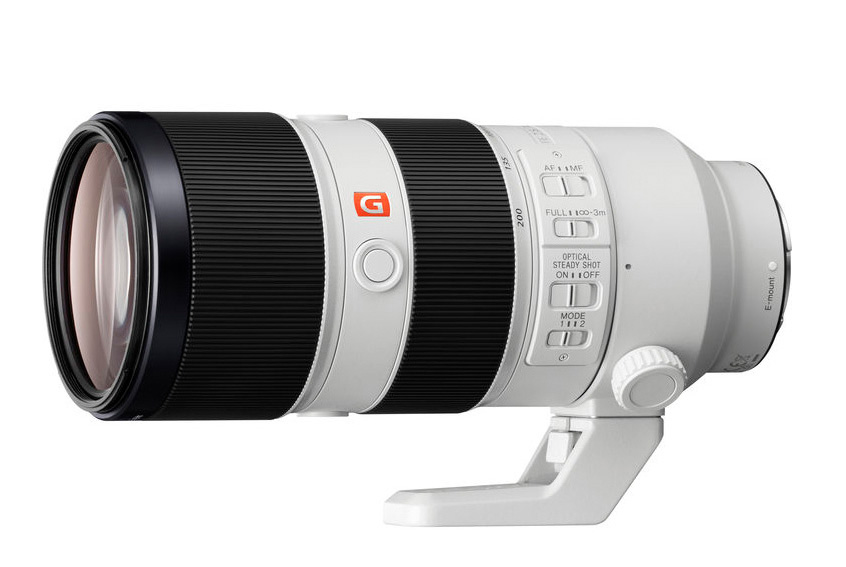Announcements, Blog, E-Mount Lenses
Why I have been waiting for the FE 70-200mm f/2.8 GM and 2.0x Teleconverter
I am most attracted to the FE 70-200 f/2.8 Telephoto Zoom because of its Teleconverters, especially the 2.0x Teleconverter. The f/2.8 Aperture will allow me to keep the ISO down when using faster shutter speeds to freeze fast moving action but also to keep the aperture reasonably bright when using the 2.0x Teleconverter. Adding a 2.0x Teleconverter to the Zoom lens will effectively double the focal length from 70-200 to 140-400 but reduce the light by 2.0 stops – giving the 70-200 F2.8 and effective aperture of f/5.6. I am OK with an effective aperture of f/5.6 at 400mm as this is what I am used to with the SAL70400 G lens that I used to use with the my A99. This new Teleconverter cannot be used with other Alpha FE lenses.
The weight of the FE-70-200 F/2.8 is slightly lower than my old 70-400 that weighed in at 3.31 lb (1.5 kg) so adding the adapter should make them feel about the same. What the new FE 70-200 F/2.8 and 2.0x teleconverter allows, however, is Lock-On AF and Eye-AF that I lost when using either of the Sony LA-EA4 or LA-EA3 adapters with the A-Mount zoom.
There is also a 1.4x Teleconverter that takes the effective focal length and aperture from 70-200 to a 98-280mm f/4 zoom lens. For photographers who don’t have the current F/4 this may be of some interest but my own interest lies in the 2.0x converter.
Some of the specs that I noticed are:
- The FE70200F28 has gained two aperture blades compared to the FE 70-200 F/4 taking the total up to 11 Rounded Aperture Blades – this should give the F/2.8 superior Bokeh to the F/4.
- The weight of the FE70200 F/2.8 is 3.26 lb (1480 g) compared to 29.63 oz (840 g) of the FE 70200 F4 G OSS
- Filter Thread has moved from 72 to 77mm from the F/4 to the F/2.8
FE 2.0x Teleconverter (this Teleconverter is specifically designed for the FE f/2.8 Telephoto Zoom and is not for use with the FE f/4 Telephoto Zoom lens).
- As part of Sony’s esteemed G Master series, this lens is designed to achieve notably high resolution and sharpness through the correction of a wide variety of spherical and chromatic aberrations. Additionally, these lenses feature robust and intuitive-to-handle physical designs to benefit both photography and cine applications.
- A popular telephoto zoom designed for full-frame E-mount mirrorless cameras, this 70-200mm lens is also compatible with APS-C models where it provides a 105-300mm equivalent focal length range.
- A constant f/2.8 maximum aperture offers consistent performance throughout the zoom range and also lends greater control over focus position for shallow depth of field techniques.
- Of the three aspherical elements incorporated in the lens design, one is an XA element with superior surface precision to effectively reduce astigmatism, field curvature, coma, and other monochromatic aberrations from imagery.
- Four extra-low dispersion elements and two Super ED elements are featured in the lens design, too, and help to control chromatic aberrations and reduce color fringing for increased clarity and color fidelity.
- A Nano AR Coating has been applied to reduce surface reflections, flare, and ghosting for increased contrast and color rendering in strong lighting conditions.
- The front lens element features a fluorine coating to protect against smudges and dust from adhering to the glass surface.
- A rounded 11-blade diaphragm contributes to a pleasing bokeh quality when employing selective focus techniques.
- Optical SteadyShot image stabilization helps to minimize the appearance of camera shake for sharper imagery when shooting handheld with slower shutter speeds. This stabilization system can also be combined with select camera’s sensor-shift type image stabilization for more effective control of camera blur.
- An OSS Mode switch lets you choose Mode 1 for general image stabilization that is suited to most types of shooting as well as a Mode 2 setting that is specifically intended to be used with panning movements.
- A linear SSM system and internal focus mechanism provides quick, quiet, and precise autofocus performance and also contributes to more natural, intuitive manual focus control.
- A floating elements system benefits image quality when working at the 3.15′ minimum focusing distance with 0.25x magnification.
- Dust- and moisture-sealed design better permits working in inclement conditions.
- Removable rotating tripod collar permits quick switching from horizontal to vertical shooting orientations.
- Focus range limiter and focus hold controls offer more intuitive handling and faster performance when photographing moving subjects.
FE 70-200mm f/2.8 GM FE 2.0x Teleconverter
